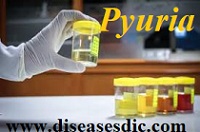Overview Phimosis is defined as the inability to retract the skin (foreskin or prepuce) covering the head (glans) of the penis. Phimosis may appear as a tight ring or “rubber band” of foreskin around the tip of the penis, preventing full retraction. Types of Phimosis Phimosis is divided into two …
Read More »Peeling skin syndrome- Definition, Treatment and Prevention
Definition Peeling skin syndrome is a group of rare inherited skin disorders characterized by painless, continual, spontaneous skin peeling (exfoliation) due to a separation of the outermost layer of the epidermis (stratum corneum) from the underlying layers. Other findings may include blistering and/or reddening of the skin(erythema) and itching (pruritus). …
Read More »Progressive Multifocal Leukoencephalopathy – Diagnosis and Treatment.
Description Progressive multifocal leukoencephalopathy (PML) is a disease of the white matter of the brain, caused by lytic infection of oligodendrocytes by the JC polyomavirus (JCV) that targets cells that make myelin – the material that insulates nerve cells (neurons). This etiological virus was isolated and identified during the brain …
Read More »Pterygium – Definition, Causes, Treatment, and Prevention.
Definition Pterygium means “wing” and refers to a wing-like growth on the surface of the eye. It (growth) spreads from the conjunctiva over the cornea. The conjunctiva is the mucous membrane covering the whites of the eyes (sclera) and the cornea is the clear windshield of the eye. Pterygia are …
Read More »Paroxysmal Nocturnal Hemoglobinuria – Definition and Treatment.
Definition Paroxysmal nocturnal hemoglobinuria or PNH is a rare and chronic disease that results in an abnormal breakdown of red blood cells. PNH is due to a spontaneous genetic mutation that causes red blood cells to be deficient in a protein, leaving them fragile. Because the kidneys help to filter …
Read More »Preeclampsia – Definition, Causes, and Treatment.
Definition Preeclampsia is defined as the presence of a systolic blood pressure (SBP) greater than or equal to 140 mm Hg or a diastolic blood pressure (DBP) greater than or equal to 90 mm Hg or higher, on two occasions at least 4 hours apart in a previously normotensive patient. …
Read More »Proteinuria – Definition, Causes, and Treatment.
Definition Proteinuria is a condition characterized by the presence of greater than normal amounts of protein in the urine. It is usually associated with some kind of disease or abnormality but may occasionally be seen in healthy individuals. Plasma, the liquid portion of blood, contains many different proteins. One of …
Read More »Pyuria – Definition, Causes, and Prevention.
Definition Pyuria is a condition that occurs when excess white blood cells, or pus, are present in the urine. Pyuria causes cloudy urine and frequently indicates the presence of a urinary tract infection (UTI). Pyuria can also indicate sepsis, a life-threatening bacterial infection, or pneumonia in older adults. Some people …
Read More » Diseases Treatments Dictionary This is complete solution to read all diseases treatments Which covers Prevention, Causes, Symptoms, Medical Terms, Drugs, Prescription, Natural Remedies with cures and Treatments. Most of the common diseases were listed in names, split with categories.
Diseases Treatments Dictionary This is complete solution to read all diseases treatments Which covers Prevention, Causes, Symptoms, Medical Terms, Drugs, Prescription, Natural Remedies with cures and Treatments. Most of the common diseases were listed in names, split with categories.








